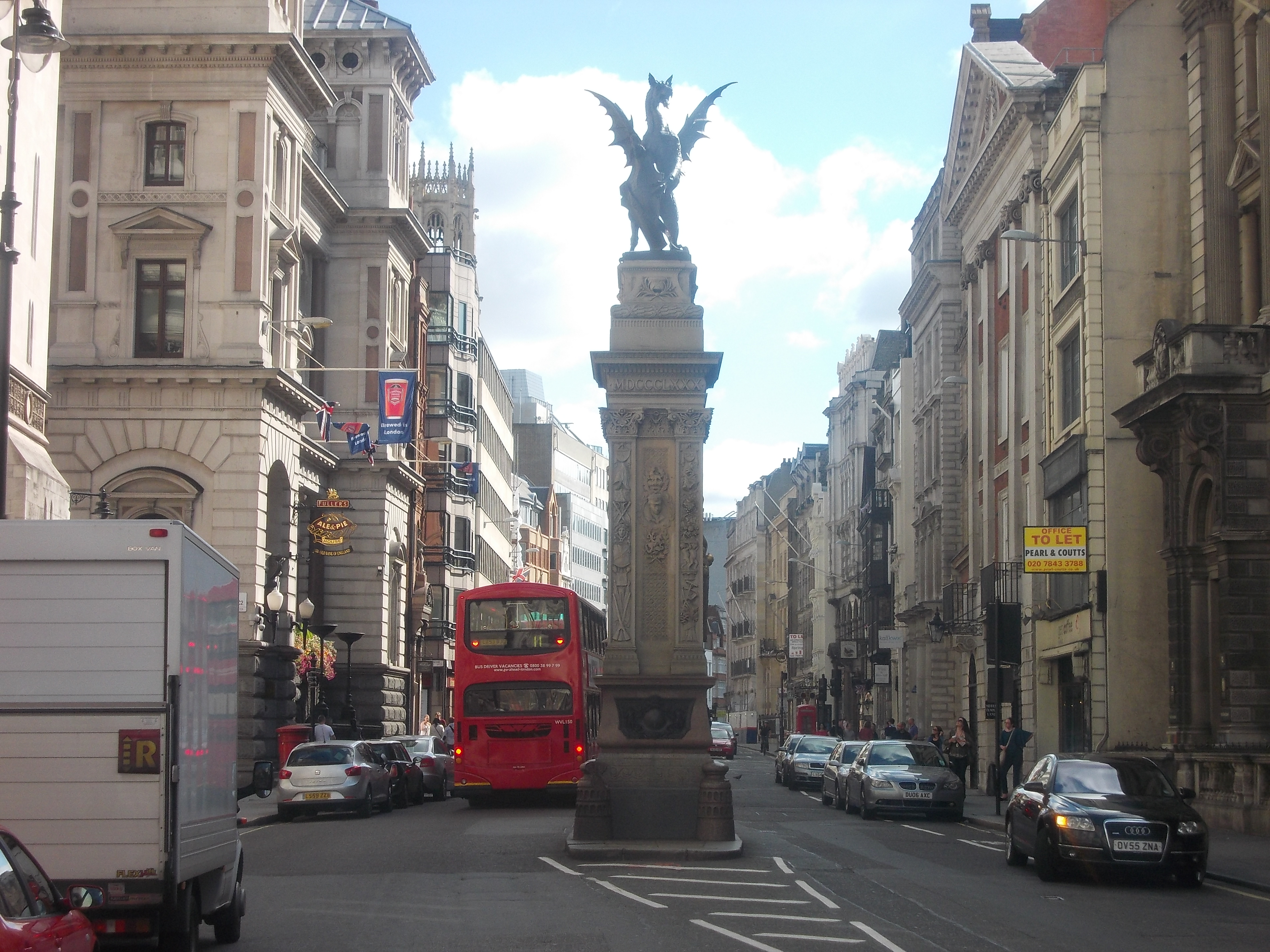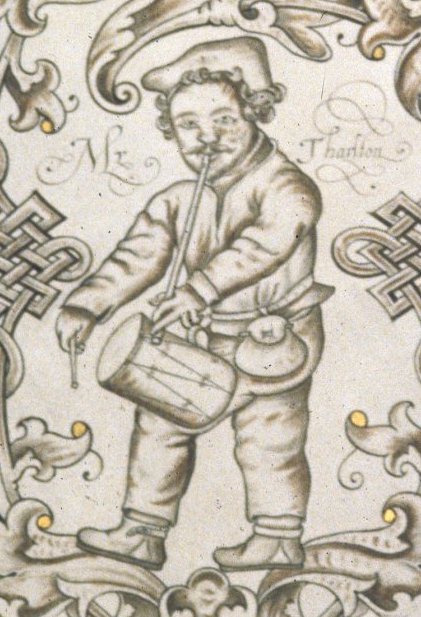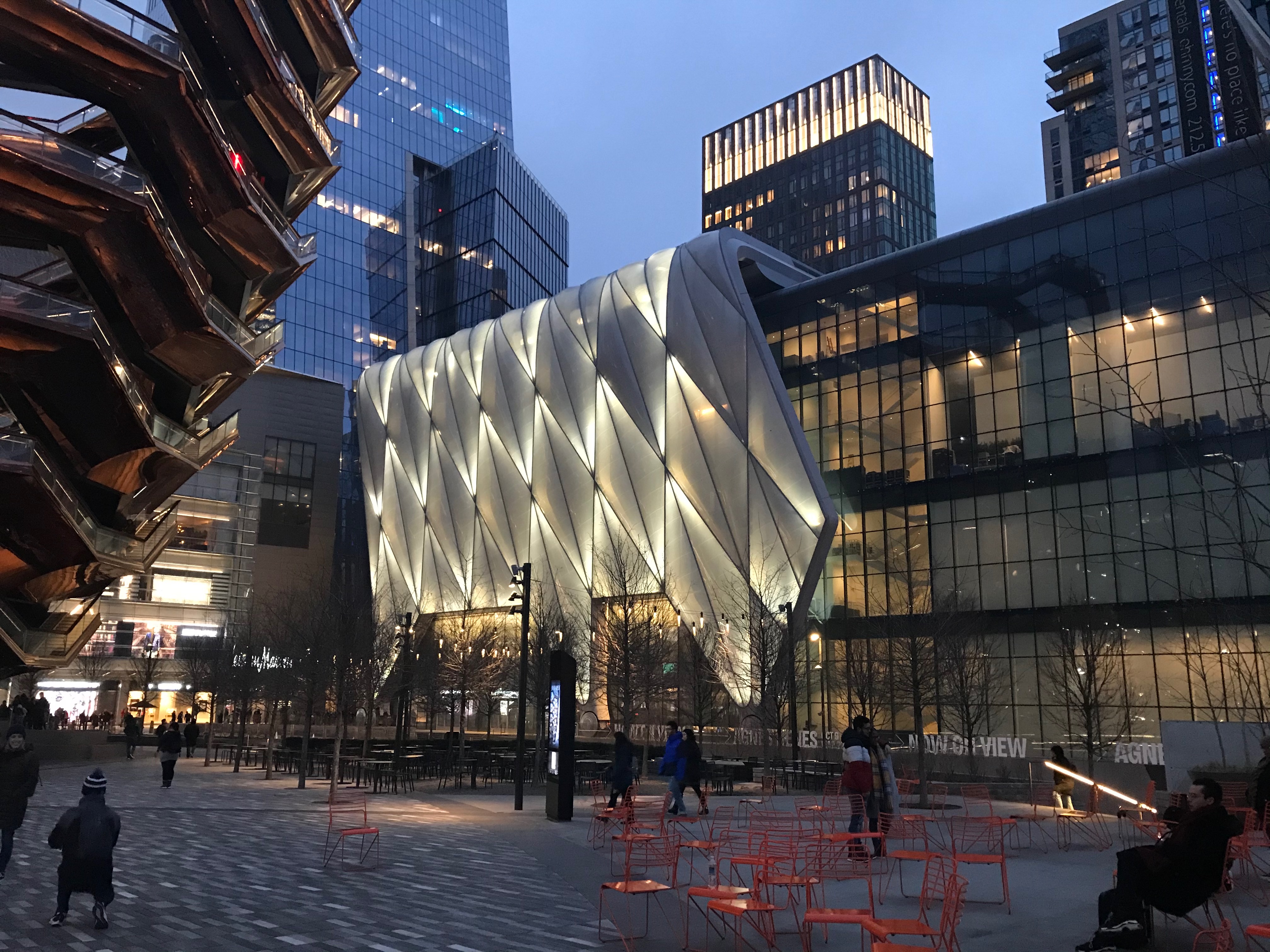|
Bell Savage Inn
The Bell Savage Inn was a public house in London, England, from the 15th century to 1873, originally located on the north side of what is now Ludgate Hill, in the City of London. It was a playhouse during the Elizabethan Era, as well as a venue for various other entertainments. It was also an important coaching inn. Other names by which it has been known throughout history include: Savage's Inn, The Bel Savage, Belle Savage, Belle Sauvage, Bell on the Hoop, Old Bell Savage, Belly Savage and others. History 15th century Written records allow the Inn's history to be traced back to at least 1420.Herbert Berry. The Bell Savage inn and playhouse in London' (Medieval and Renaissance Drama in England – 1 January 2006). In 1453 (in the reign of Henry VI), a deed gave the building's name (in translation) as "''Savage's Inn''" or "''The Bell on the Hoop''" and located within the parish of St. Bridget (Bride) in Fleet Street. "Savage" is thought to be the name of a former, perhaps ... [...More Info...] [...Related Items...] OR: [Wikipedia] [Google] [Baidu] |
ONL (1887) 1
ONL may stand for: * Online, as used in text messaging and academic circles * Orange and Lemons, a Filipino band * Order of Newfoundland and Labrador, a title * Outer nuclear layer, a layer of the retina * Oosterhuis Lénárd architecture office by Kas Oosterhuis Kas Oosterhuis (1951) is a Dutch architect, professor and co-founder of the innovation studio ONL together with visual artist Ilona Lénárd. He was a professor at Delft University of Technology (TU Delft) from 2000 to 2016 and has been a profes ... * Opening Night Live {{disambig ... [...More Info...] [...Related Items...] OR: [Wikipedia] [Google] [Baidu] |
Temple Bar, London
Temple Bar is a building that was until 1878 the principal ceremonial entrance to the City of London from the City of Westminster; since relocated, it is today the home of the Worshipful Company of Chartered Architects and an education centre focused on architecture and heritage in the City of London. In the middle ages, London expanded city jurisdiction beyond its walls to gates, called ‘bars’, which were erected across thoroughfares. To the west of the City of London, the bar was located in the area known as the Temple. Temple Bar was situated on the historic royal ceremonial route from the Tower of London to the Palace of Westminster, the two chief residences of the medieval English monarchs, and from the Palace of Westminster to St Paul's Cathedral. The road east of where Temple Bar once stood and within the City is Fleet Street, while the road to the west, in Westminster, is The Strand. The Corporation of the City of London formerly erected a barrier to regulate trade ... [...More Info...] [...Related Items...] OR: [Wikipedia] [Google] [Baidu] |
Pocahontas
Pocahontas (, ; born Amonute, known as Matoaka, 1596 – March 1617) was a Native American woman, belonging to the Powhatan people, notable for her association with the colonial settlement at Jamestown, Virginia. She was the daughter of Powhatan, the paramount chief of a network of tributary tribes in the Tsenacommacah, encompassing the Tidewater region of Virginia. Pocahontas was captured and held for ransom by English colonists during hostilities in 1613. During her captivity, she was encouraged to convert to Christianity and was baptized under the name Rebecca. She married tobacco planter John Rolfe in April 1614 at the age of about 17 or 18, and she bore their son Thomas Rolfe in January 1615. In 1616, the Rolfes travelled to London where Pocahontas was presented to English society as an example of the "civilized savage" in hopes of stimulating investment in the Jamestown settlement. On this trip she may have met Squanto, a "Patuxet Native American" from New Englan ... [...More Info...] [...Related Items...] OR: [Wikipedia] [Google] [Baidu] |
Bear-baiting
Bear-baiting is a blood sport in which a chained bear and one or more dogs are forced to fight one another. It may also involve pitting a bear against another animal. History Europe Great Britain Bear-baiting was very popular from the 12th until the 19th century. From the sixteenth century, many bears were maintained for baiting. In its best-known form, arenas for this purpose were called bear-gardens, consisting of a circular high fenced area, the " pit", and raised seating for spectators. A post would be set in the ground towards the edge of the pit and the bear chained to it, either by the leg or neck. Several well-trained fighting or baiting dogs, usually Old English Bulldogs, would then be set on it, being replaced as they got tired or were wounded or killed. In some cases the bear was let loose, allowing it to chase after animals or people. For a long time, the main bear-garden in London was the Paris Garden, a section of the Bankside lying to the west of The Clink, a ... [...More Info...] [...Related Items...] OR: [Wikipedia] [Google] [Baidu] |
Bankes's Horse
Marocco (c. 1586 – c. 1606), widely known as Bankes's Horse (after his trainer William Bankes), was the name of a late 16th- and early 17th-century English performing horse. He is sometimes referred to as the "Dancing Horse", the "Thinking Horse", or the "Politic Horse". Origin William Bankes (also spelled Banks or Banckes, and sometimes called Richard Bankes) was born in Staffordshire, probably in the early 1560s, In the 1580s he became a retainer of Robert Devereux, the Earl of Essex; his job may have been working in the stables. The horse that would be named Marocco was born around 1586; most sources agree he was bay, but some record him as white. Soon thereafter he was obtained by Bankes, who named him after the morocco leather from which contemporary saddles were made, and jocularly addressed him as "seignior" (''señor''). According to modern English physician and writer Jan Bondeson, "Marocco was a small, muscular horse with remarkable litheness and agility; he also ... [...More Info...] [...Related Items...] OR: [Wikipedia] [Google] [Baidu] |
Fencing
Fencing is a group of three related combat sports. The three disciplines in modern fencing are the foil, the épée, and the sabre (also ''saber''); winning points are made through the weapon's contact with an opponent. A fourth discipline, singlestick, appeared in the 1904 Olympics but was dropped after that and is not a part of modern fencing. Fencing was one of the first sports to be played in the Olympics. Based on the traditional skills of swordsmanship, the modern sport arose at the end of the 19th century, with the Italian school having modified the historical European martial art of classical fencing, and the French school later refining the Italian system. There are three forms of modern fencing, each of which uses a different kind of weapon and has different rules; thus the sport itself is divided into three competitive scenes: foil, épée, and sabre. Most competitive fencers choose to specialize in one weapon only. Competitive fencing is one of the five activitie ... [...More Info...] [...Related Items...] OR: [Wikipedia] [Google] [Baidu] |
Richard Tarlton
Richard Tarlton (died September 1588), was an English actor of the Elizabethan era. He was the most famous clown of his era, known for his extempore comic doggerel verse, which came to be known as "Tarltons". He helped to turn Elizabethan theatre into a form of mass entertainment paving the way for the Shakespearean stage. After his death many witticisms and pranks were attributed to him and were published as ''Tarlton's Jests''. Tarlton was also an accomplished dancer, musician and fencer. He was also a writer, authoring a number of jigs, pamphlets and at least one full-length play. Family Information on Tarlton's family background is meagre. His father's first name is unknown. His mother's first name was Katherine, but her maiden name is also unknown. A later lawsuit establishes that he had a sister named Helen. His birthplace is also unknown, although more than a century after Tarlton's death Thomas Fuller said that he was born at Condover in Shropshire, where his father was a ... [...More Info...] [...Related Items...] OR: [Wikipedia] [Google] [Baidu] |
Box (theatre)
In a theatre, a box, loge, or opera box is a small, separated seating area in the auditorium or audience for a limited number of people for private viewing of a performance or event. Boxes are typically placed immediately to the front, side and above the level of the stage. They are separate rooms with an open viewing area which typically seat five people or fewer. Usually all the seats in a box are taken by members of a single group of people. A state box or royal box is sometimes provided for dignitaries. In theatres without box seating the loge can refer to a separate section at the front of the balcony. Sports venues such as stadiums and racetracks also have royal boxes or enclosures, for example at the All England Club and Ascot Racecourse, where access is limited to royal families or other distinguished personalities. In other countries, sports venues have luxury boxes aka skyboxes, where access is open to anyone who can afford tickets, sometimes bought by companies. Se ... [...More Info...] [...Related Items...] OR: [Wikipedia] [Google] [Baidu] |
Theater (structure)
A theater, theatre or playhouse, is a structure where theatre, theatrical works, performing arts and musical Concert, concerts are presented. The theater building serves to define the performance and audience spaces. The facility usually is organized to provide support areas for performers, the technical crew and the audience members, as well as the stage where the performance takes place. There are as many types of theaters as there are types of performance. Theaters may be built specifically for a certain types of productions, they may serve for more general performance needs or they may be adapted or converted for use as a theater. They may range from open-air amphitheaters to ornate, cathedral-like structures to simple, undecorated rooms or black box theaters. A theatre used for opera performances is called an opera house. A theater is not required for performance (as in site-specific theatre, environmental theater or street theatre, street theater), this article is about s ... [...More Info...] [...Related Items...] OR: [Wikipedia] [Google] [Baidu] |
Belle Sauvage Entrance 1782
Belle may refer to: * Belle (''Beauty and the Beast'') * Belle (given name), a list of people and fictional characters * Belle (surname), a list of people Brands and enterprises * Belle Air, a former airline with headquarters in Tirana, Albania * Belle Air Europe, a subsidiary of Belle Air in the Kosovo * Belle Baby Carriers, an American baby carrier manufacturer * Belle International, a Chinese footwear retailer Film and television * ''Belle'' (1973 film), a Belgian-French drama film by André Delvaux * ''Belle'' (2013 film), a British film by Amma Asante * ''Belle'' (2021 film), a Japanese animated film by Mamoru Hosoda * ''Belle's'', an American comedy TV series that premiered in 2013 Music * ''Belle'' (album), a 2011 album by Bic Runga * "Belle" (Patrick Fiori, Daniel Lavoie and Garou song), a song from the 1998 musical adaptation of Victor Hugo's novel ''Notre Dame de Paris'' * "Belle" (Disney song), a song written for Disney's 1991 film ''Beauty and the Beast'' * '' ... [...More Info...] [...Related Items...] OR: [Wikipedia] [Google] [Baidu] |
Courtyard
A courtyard or court is a circumscribed area, often surrounded by a building or complex, that is open to the sky. Courtyards are common elements in both Western and Eastern building patterns and have been used by both ancient and contemporary architects as a typical and traditional building feature. Such spaces in inns and public buildings were often the primary meeting places for some purposes, leading to the other meanings of court. Both of the words ''court'' and ''yard'' derive from the same root, meaning an enclosed space. See yard and garden for the relation of this set of words. In universities courtyards are often known as quadrangles. Historic use Courtyards—private open spaces surrounded by walls or buildings—have been in use in residential architecture for almost as long as people have lived in constructed dwellings. The courtyard house makes its first appearance ca. 6400–6000 BC (calibrated), in the Neolithic Yarmukian site at Sha'ar HaGolan, in ... [...More Info...] [...Related Items...] OR: [Wikipedia] [Google] [Baidu] |
Cambridge
Cambridge ( ) is a university city and the county town in Cambridgeshire, England. It is located on the River Cam approximately north of London. As of the 2021 United Kingdom census, the population of Cambridge was 145,700. Cambridge became an important trading centre during the Roman and Viking ages, and there is archaeological evidence of settlement in the area as early as the Bronze Age. The first town charters were granted in the 12th century, although modern city status was not officially conferred until 1951. The city is most famous as the home of the University of Cambridge, which was founded in 1209 and consistently ranks among the best universities in the world. The buildings of the university include King's College Chapel, Cavendish Laboratory, and the Cambridge University Library, one of the largest legal deposit libraries in the world. The city's skyline is dominated by several college buildings, along with the spire of the Our Lady and the English Martyrs ... [...More Info...] [...Related Items...] OR: [Wikipedia] [Google] [Baidu] |
_1.217_-_Outer_Court_of_La_Belle_Sauvage_in_1828.jpg)


.jpg)





.jpg)
